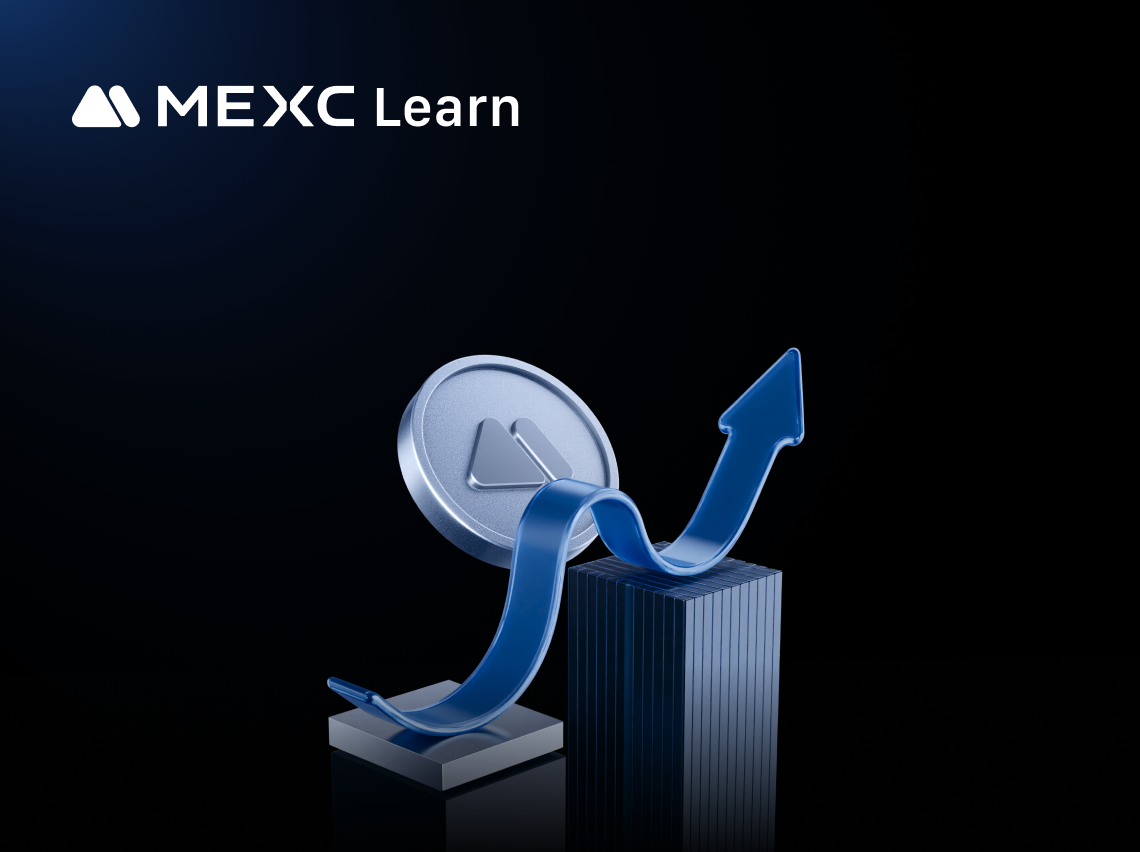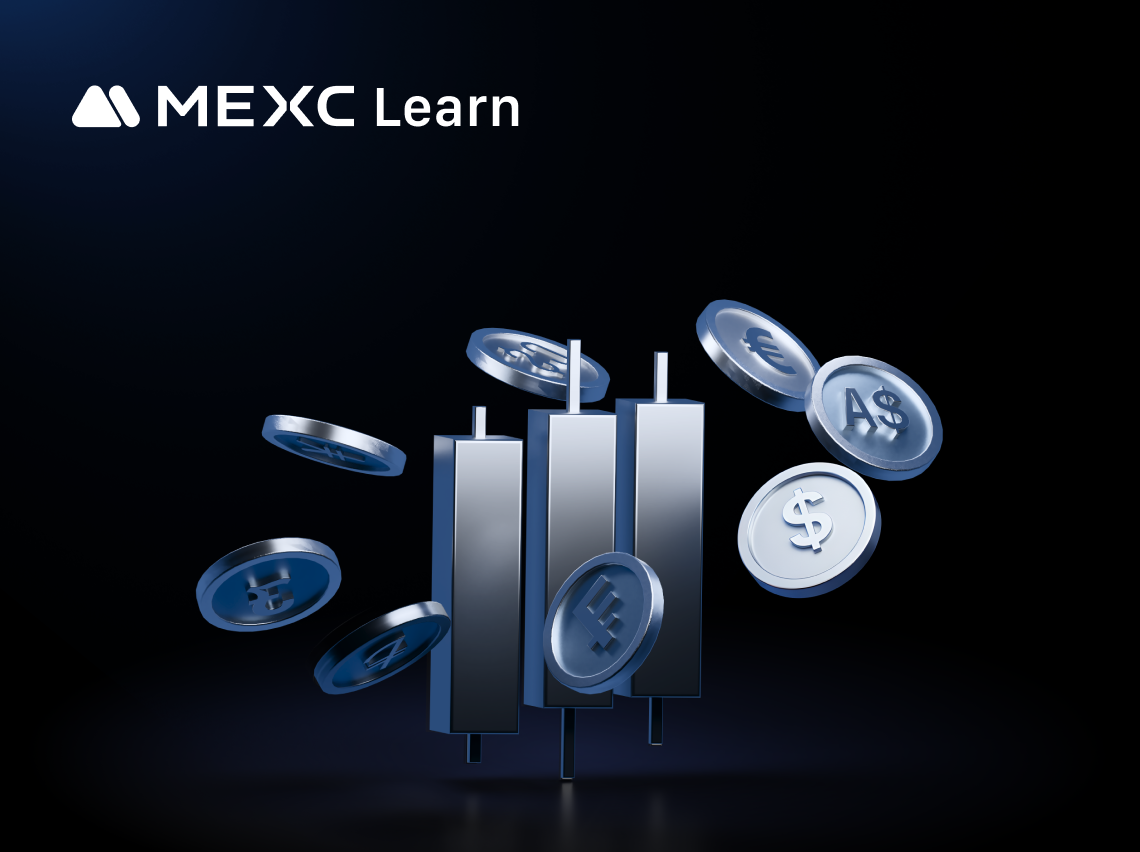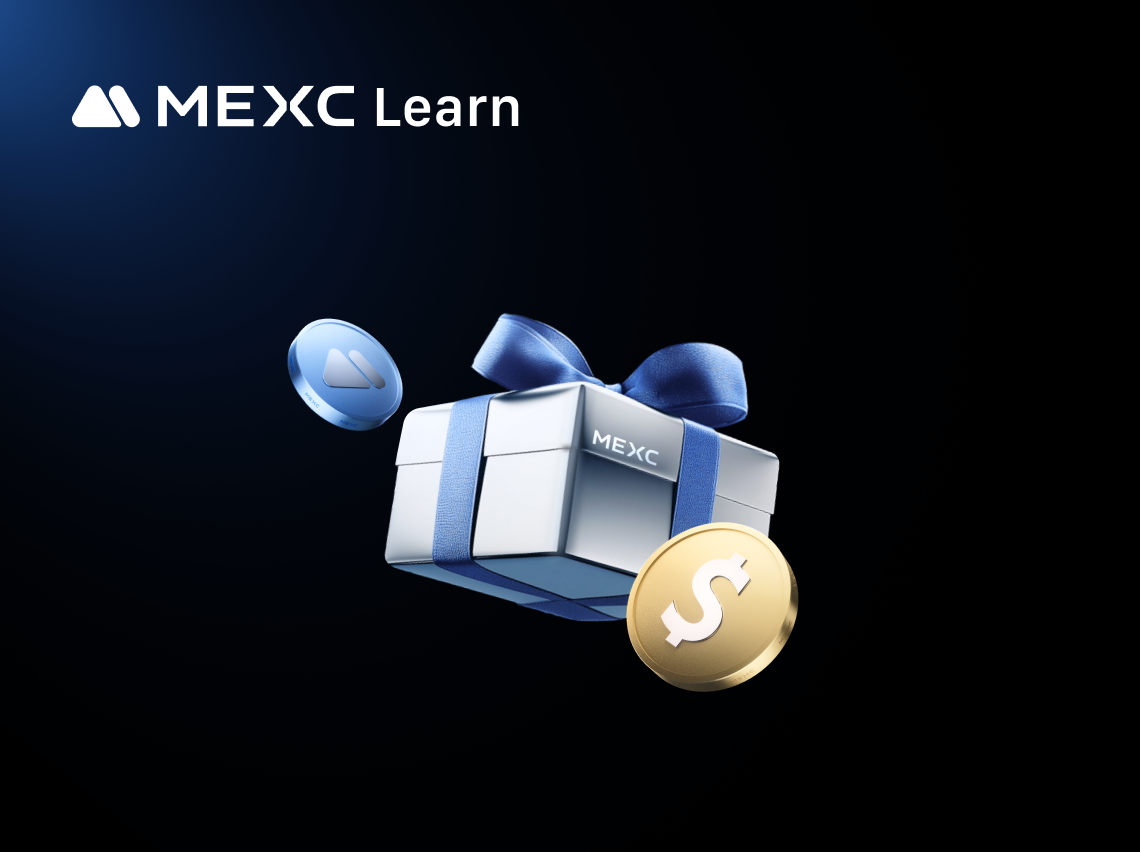Understanding how leverage works, when to use different leverage levels, and how to manage associated risks is essential for any market participant. This article offers an in-depth look into the fundamentals of Futures leverage, exploring strategic use cases from low to as high as 500x leverage. It aims to provide traders with a professional perspective to support more informed decision-making.
The primary advantage of Futures leverage is capital efficiency. By using margin, traders can potentially benefit from price movements on positions with notional values significantly larger than the capital they commit, amplifying both possible gains and losses.
Key advantages include:
1) Amplified Potential Returns: Favorable price movements lead to magnified profits, allowing traders to achieve high returns on a relatively small margin, accelerating capital growth.
2) Improved Capital Efficiency: Margin trading allows for larger positions with smaller capital, freeing up remaining funds for other opportunities or risk control measures.
3) Greater Flexibility and Opportunity: Leverage enables traders to profit from small price movements (especially with high leverage) and supports strategies like hedging and arbitrage.
However, this amplification effect works both ways—risk is equally magnified:
1) Magnified Loss Potential: Adverse market movements can rapidly deplete your margin due to leverage magnification.
2) Liquidation (Forced Closure) Risk: The biggest risk in leveraged trading. If losses cause the margin to fall below the maintenance threshold, the system will force close the position to prevent further losses, resulting in the loss of the margin. Sudden market volatility (e.g., “wicks”) can easily trigger liquidation.
3) Increased Pressure and Difficulty: High leverage leads to volatile PNL swings, placing greater demands on traders’ decision-making, emotional control, and risk management skills.
In short, leverage is an amplifier. It magnifies both gains and risks. Recognizing this high-risk, high-reward nature is critical, and proper risk management is essential when using Futures leverage.
When trading Futures, leveraged trading involves depositing a margin to secure a position whose notional value is much higher than the margin itself. The ratio between the two is referred to as leverage.
Key concepts include:
Margin: The capital required to open and maintain a leveraged position.
Leverage: The ratio between the notional value of the position and the required margin. For example, 10× leverage means using 1 unit of margin to trade a 10-unit position.
Position Value (Notional Value): The total value of the Futures position traded through leverage.
Initial Margin: The minimum margin required to open a new position.
Maintenance Margin: The minimum margin that must be maintained to avoid liquidation. This is typically lower than the initial margin. Once the margin falls below this level, forced closure is triggered.
Example: Suppose a trader has 1,000 USDT in capital and is bullish on an asset.
Without Leverage (Spot Trading): The trader buys 1,000 USDT worth of the asset.
If the price rises 5%, the capital becomes 1,050 USDT → Profit: 50 USDT (5%)
If the price drops 5%, the capital becomes 950 USDT → Loss: 50 USDT (-5%)
With 10× Leverage (Futures Trading): The trader uses 1,000 USDT as margin to open a long position worth 10,000 USDT.
If the price rises 5%, the position value becomes 10,500 USDT → Profit: 500 USDT (+50%)
If the price drops 5%, the position value becomes 9,500 USDT → Loss: 500 USDT (-50%)
If the price drops further and the margin falls below the maintenance level → Liquidation is triggered.
To trade leveraged Futures safely, it is crucial to understand not only the mechanics but also risk management tools—such as Stop Loss (SL) to cap losses, and Take Profit (TP) to lock in gains. These will be explained in more detail in later sections.
For more comprehensive guidance, we recommend exploring MEXC Learn beginner-friendly resources on Futures trading.
Choosing the appropriate leverage level requires a comprehensive assessment of one’s trading experience, risk tolerance, strategy, asset volatility, and market conditions.
Ideal for: Conservative traders, beginners in Futures trading, long-term trend followers, and investors managing larger capital who prioritize risk management.
Applicable scenarios: Ideal for familiarizing yourself with Futures trading in a safer environment, low leverage is well-suited for holding longer-term positions with broader target price ranges. It’s also useful when trading highly volatile or lower-liquidity assets, where preserving a wider safety margin during market swings is essential.
Characteristics: Limited risk exposure with greater distance from liquidation thresholds. However, capital efficiency and profit amplification are less pronounced.
Ideal for: Traders with some experience in Futures trading, basic risk management skills, and those engaging in intraday or swing trading strategies.
Applicable scenarios: Medium leverage is suited for capturing short to medium-term market trends and price movements. It is particularly effective when seeking enhanced returns on major high-liquidity assets while maintaining a balanced approach between risk and potential reward.
Characteristics: Offers solid capital efficiency and potential profit amplification, with moderate risk compared to high leverage. Must be used alongside strict risk control measures such as stop-loss orders.
Ideal for: Only highly experienced, highly disciplined professional traders.
Applicable scenarios: High leverage is best reserved for capitalizing on very small price fluctuations in high-liquidity, low-volatility markets such as BTC and ETH. It is also used for executing quick in-and-out trades driven by strong conviction around specific short-term market events.
Characteristics: Extremely high potential returns but equally high sensitivity to price volatility. Liquidation risk is extremely high, leaving almost no margin for error. Traders must possess top-tier technical skills, fast execution reflexes, and iron discipline.
Regarding 500× and ultra-high leverage: These tools are designed for professional use only—not for general application. Ultra-high leverage must be paired with advanced risk control measures, such as precise position sizing and pre-set stop-losses.
Leverage is a neutral tool in financial markets. Its value lies in magnifying the outcomes of a trader’s decisions—not in improving the decisions themselves. Selecting the right leverage should be based on individual circumstances. Low leverage prioritizes capital safety, while high leverage boosts efficiency but comes with substantial risk. Understanding the nature of leverage and the risk management mechanisms provided by the exchange (especially leverage restrictions) is essential. Above all, risk management must always be the top priority.
In the cryptocurrency market, the risks and rewards of leveraged trading are closely tied to market conditions such as volatility and trend direction. Selecting an appropriate leverage level—low, medium, or high—and applying suitable strategies is key to balancing profit potential and liquidation risk. The strategies below are designed for both beginners and intermediate traders to adjust leverage according to different market conditions.
When the market experiences sharp swings—often triggered by major news (e.g., regulatory changes, macroeconomic data) or on-chain activity (e.g., large transfers, sell-offs)—traders are advised to use lower leverage to minimize liquidation risk and ensure their positions can withstand larger price fluctuations.
In highly volatile markets, price movements of 5%–10% can occur within short time frames. High-leverage positions may be liquidated by just a 1%–2% move, while low-leverage positions offer a broader buffer to weather these fluctuations.
Strategic Tips:
Reduce position size and focus on high-liquidity pairs (e.g., BTCUSDT), avoiding volatile small-cap tokens.
Use isolated margin mode to limit exposure on individual positions and protect the broader account from cascading losses.
Monitor market developments closely via MEXC Futures’ announcements and news updates to adjust or close positions in time.
In clear upward or downward trending markets, where price direction is more predictable, traders can moderately increase leverage to magnify returns from small price moves—while still preserving some tolerance for volatility to avoid liquidation.
Mid-level leverage is more suitable for traders with technical analysis experience and basic risk management capabilities. Beginners should proceed cautiously and focus on developing trend recognition skills first.
Strategic Tips:
Confirm trends using technical tools like candlestick patterns, support/resistance levels, and indicators (e.g., RSI, MACD).
Use a scaled entry strategy to reduce average cost and avoid full-position exposure from the start.
Cap position size relative to account balance, especially when using medium leverage, to maintain a buffer.
Case Study:
Assume the price of BTC rises from 99,000 USDT to 100,000 USDT, breaking through a key resistance level (100,000 USDT being both a psychological and technical barrier). The candlestick pattern indicates a bullish trend, and technical indicators such as moving averages further confirm a potential bull run, with the price possibly climbing to 105,000 USDT. The trader decides to moderately increase leverage to capture potential gains:
With an initial capital of 5,000 USDT, the trader chooses 10× leverage to open a long position with a position value of 50,000 USDT on BTCUSDT, at the entry price of 100,000 USDT, representing a contract size equivalent to 0.5 BTC (50,000 / 100,000 = 0.5).
If the price rises by 5% as expected, reaching 105,000 USDT, the position value becomes 0.5 × 105,000 = 52,500 USDT. The trader makes a profit of 2,500 USDT, achieving a 50% return on the initial margin (2,500 / 5,000 × 100%).
By comparison, if the trader had purchased 0.05 BTC with 5,000 USDT using no leverage, the same 5% price increase would yield only 250 USDT in profit—a 5% return.
However, if the trader had used excessive leverage, the risk would significantly increase. The following example compares 10× and 100× leverage scenarios:
Initial Setup:
Initial Margin: 5,000 USDT
Leverage: 10x
Position Value: 5,000 × 10 = 50,000 USDT
Maintenance Margin:
Maintenance Margin Ratio: 0.7% (refer to the actual figures on the Futures trading page under “Risk Limits”) Min. Required Margin: 50,000 × 0.7% = 350 USDT
Liquidation Threshold: Position is liquidated when margin falls to 350 USDT
Max. Allowable Loss: 5,000 - 350 = 4,650 USDT
Liquidation Calculation:
Max. Price Drop Before Liquidation: (5,000 - 350) / 50,000 = 9.3%
Liquidation Price: 100,000 × (1 - 9.3%) = 90,700 USDT
Scenario: 5% Adverse Price Move
BTC drops to 95,000 USDT (down 5%)
Loss: 0.5 × (100,000 - 95,000) = 2,500 USDT
Remaining Margin: 5,000 - 2,500 = 2,500 USDT
Margin Ratio: 2,500 / 47,500 = 5.26%, which is above the 0.7% threshold, no liquidation will occur.
Initial Setup:
Initial Margin: 5,000 USDT
Leverage: 50x
Position Value: 5,000 × 50 = 250,000 USDT
Maintenance Margin:
Maintenance Margin Ratio: 0.7% (refer to the actual figures on the Futures trading page under “Risk Limits”) Min. Required Margin: 250,000 × 0.7% = 1,750 USDT
Liquidation Threshold: Position is liquidated when margin falls to 1,750 USDT
Max. Allowable Loss: 5,000 - 1,750 = 3,250 USDT
Liquidation Calculation:
Max. Price Drop Before Liquidation: (5,000 - 1,750) / 250,000 = 1.3%
Liquidation Price: 100,000 × (1 - 1.3%) = 98,700 USDT
Scenario: 5% Adverse Price Move:
BTC drops to 95,000 USDT (down 5%)
Loss: 2.5 × (100,000 - 95,000) = 12,500 USDT
Remaining Margin: 5,000 - 12,500 = –7,500 USDT, which means the position is already liquidated
In fact, liquidation occurs at 98,700 USDT (–1.3% drop), well before the full 5% move. The position would have been fully liquidated, with a potential negative balance of 7,500 USDT
Moderate leverage can offer a good balance between risk and reward in trending markets. However, excessive leverage can lead to significant losses from even small market fluctuations.
When the market lacks a clear trend and prices fluctuate within a narrow range (e.g., daily volatility below 2%, sideways price action), skilled traders may utilize high leverage (e.g., 50–100x) to capture quick intraday gains. However, this approach demands extremely strong discipline and advanced risk management.
In a sideways market, small price swings are ideal for short-term strategies. High leverage can turn even slight moves (like 0.5%) into significant returns. At the same time, liquidation risk increases dramatically. This method is only suitable for experienced traders who can precisely identify short-term opportunities and execute stop-losses rigorously.
Strategic Tips:
Focus on ultra-short-term trades: Operate on intraday or hourly timeframes. Enter and exit positions quickly and avoid holding overnight to reduce exposure to uncertainty.
Set tight stop-losses: Keep stop-loss ranges narrow to avoid being liquidated by minor price fluctuations.
Trade high-liquidity pairs: Stick with BTCUSDT, ETHUSDT, etc., to ensure fast order execution and minimize slippage.
Case Study:
Suppose BTC ranges between 105,000 and 110,000 USDT. The trader expects a small upward move in the short term and decides to use high leverage to capture a quick swing trade.
Initial capital: 5,000 USDT
Leverage: 100×
Position size: 500,000 USDT
Entry price: 110,000 USDT
Position: Long (bullish)
Contract Value: 500,000 / 110,000 = 4.545 BTC
If BTC increases by 0.5%, reaching 110,550 USDT:
Position Value: 4.545 × 110,550 = 502,500 USDT
Profit: 502,500 – 500,000 = 2,500 USDT
PNL Rate: 2,500 / 5,000 × 100% = 50%
In comparison, without leverage: 5,000 USDT buys 0.04545 BTC
At 110,550 USDT,
Profit = 0.04545 × (110,550 – 110,000) = 25 USDT
PNL Rate: 25 / 5,000 × 100% = 0.5%
Initial Setup:
Initial Margin: 5,000 USDT
Leverage: 100x
Position Value: 5,000 × 100 = 500,000 USDT
Maintenance Margin:
Maintenance Margin Ratio: 0.7% (refer to the actual figures on the Futures trading page under “Risk Limits”) Min. Required Margin: 500,000 × 0.7% = 3,500 USDT
Liquidation Threshold: Position is liquidated when margin falls to 3,500 USDT
Max. Allowable Loss: 5,000 - 3,500 = 1,500 USDT
Liquidation Calculation:
Max. Price Drop Before Liquidation: 1,500 / 500,000 = 0.3%
Liquidation Price: 110,000 × (1 - 0.3%) = 109,670 USDT
Scenario: 0.5% Adverse Price Move
BTC drops to 109,450 USDT (down 0.5%)
Loss = 4.545 × (110,000 – 109,450) = 2,500 USDT
Remaining Margin = 5,000 – 2,500 = 2,500 USDT
Margin Ratio = 2,500 / 497,500 = 0.502%, which is below the 0.7% threshold, the position would have already been liquidated
In sideways markets, high leverage can amplify small price moves into sizable gains, but it comes with extremely high liquidation risk. It must be used with caution and strict stop-loss enforcement, and is only suitable for highly experienced traders.
In the ever-changing cryptocurrency market, maintaining a fixed leverage level can either expose traders to excessive risk or limit potential returns. Dynamically adjusting leverage and position size, combined with diversified allocation, is essential to optimizing risk-reward ratios and maintaining overall account stability.
Diversification helps reduce concentration risk from a single asset or position. For example, a single high-leverage BTC position may face liquidation from a sudden drop, whereas spreading capital across multiple assets such as BTC and ETH can help offset losses and improve resilience. Additionally, adapting leverage and position size based on changing market conditions—such as a shift to range-bound or highly volatile markets—helps prevent being caught off guard.
Strategic Tips
Regularly assess account risk: Monitor your margin ratio and aim to maintain it at a higher level to ensure sufficient buffer against volatility.
Proactively reduce risk: When markets become more volatile or choppy, lower leverage or reduce position size to free up margin and better withstand fluctuations.
Diversify capital allocation: Spread funds across multiple trading pairs (e.g., BTCUSDT, ETHUSDT, SOLUSDT), and assign different leverage levels to each (e.g., low leverage for BTC, medium leverage for ETH).
Use cross-margin mode: Balance risk across multiple positions, but keep an eye on total margin requirements to avoid cascading liquidation triggered by a single underperforming position.
TP/SL and risk management tools are critical safeguards in leveraged trading. MEXC offers multi-layered protection features to help users limit losses and keep their funds secure.
MEXC maintains an insurance fund designed to ensure the smooth execution of forced closures. If a position incurs losses that exceed the initial margin, the insurance fund covers the deficit.
For example, if a user opens a long position worth 10,000 USDT with 1,000 USDT margin at 10× leverage, and a sudden market crash causes losses greater than 1,000 USDT (i.e., the position goes into negative equity), the insurance fund will step in to cover the loss beyond the margin, protecting both the platform and other users from systemic risk.
The insurance fund grows from the remaining value when a position is liquidated at a price better than the bankruptcy price. For instance, if a user’s ETHUSDT long position has a bankruptcy price of 2,000 USDT but is liquidated at 2,050 USDT, the 50 USDT difference is collected by the platform and added to the fund. Users can check real-time and historical balances of each insurance fund on the Insurance Fund page.
A standard stop-loss order is a core risk control tool that allows users to set a trigger price. When the market hits this price, the system automatically closes the position to limit further losses. This helps preserve capital during unfavorable market moves.
For example: A user opens a BTCUSDT long position with 5,000 USDT margin and 10× leverage. The total position size is 50,000 USDT, and the contract value is 0.5 BTC (assuming BTC price is 100,000 USDT). A stop-loss is set at 98,000 USDT (2% drop).
Initial Position Value: 50,000 USDT
Exit Price: 0.5 × 98,000 = 49,000 USDT
Loss Incurred: 50,000 – 49,000 = 1,000 USDT
Loss Ratio: 1,000 / 5,000 = 20%
Remaining Margin: 4,000 USDT
By using this stop-loss, the user caps their maximum potential loss at a predefined level, providing greater control over downside exposure.
A trailing stop order is an advanced risk management tool that allows users to dynamically adjust their stop-loss level as the market price moves in a favorable direction. It helps lock in profits while automatically closing the position if the price reverses, protecting gains.
Users set a fixed callback rate or amount. The system then adjusts the stop-loss trigger price based on the highest (for long positions) or lowest (for short positions) market price reached. The stop-loss level updates as the price moves favorably but remains unchanged during unfavorable moves, allowing users to retain more profits during volatile swings.
Suppose a user opens a long position in BTCUSDT with a margin of 5,000 USDT, 10x leverage, a total position value of 50,000 USDT, and a contract value of 0.5 BTC (assuming BTC price is 100,000 USDT). The user sets a trailing stop with a 1% callback rate. After the trailing stop order is activated, the system records the current price of 100,000 USDT as the starting point and the initial stop trigger price is 100,000 USDT × (1 - 1%) = 99,000 USDT:
If the price doesn't go up after opening a long order, the price goes down:
Instead, the price drops by 1%, i.e. from 100,000 USDT to 99,000 USDT, which happens to reach the TP/SL trigger price, the system automatically closes the position with a market order, and the user loses 50,000 - (99,000 x 0.5) = 500 USDT.
If you open a long order, the price rises as expected:
If the price of BTC rises by 5% to 105,000 USDT, the system will automatically update the TP/SL Trigger Price to 105,000 USDT × (1 - 1%) = 103,950 USDT. At this point, the TP/SL Point has been raised in line with the price increase, locking in a partial gain.
If the price rises further to 110,000 USDT (10% increase), the system adjusts the TP/SL Trigger price again to 110,000 USDT × (1 - 1%) = 108,900 USDT.
If the price drops 1%, from 110,000 USDT to 108,900 USDT, the Trailing Stop Order is triggered and the system automatically closes the position with a Market Order. At this point:
Initial Position Value: 50,000 USDT
Position value at closing: 0.5 × 108,900 USDT ≈ 54,450 USDT
Profit: 54,450 USDT - 50,000 USDT = 4,450 USDT
PNL Rate (based on total position value): 4,450 / 50,000 = 8.9% (about 9%)
By using a trailing stop, the user successfully locks in an approx. 9% return on the full position and avoids potential losses from further price declines.
When the account margin ratio approaches the liquidation threshold (e.g., 30% of the position value), MEXC will proactively notify users via app push notifications or email alerts. These timely warnings allow users to take action to avoid forced liquidation risks. Based on these alerts, users can choose to either add more margin or reduce their position size to protect their account assets.
It is crucial to monitor alerts and respond promptly. If the margin ratio continues to decline and reaches the liquidation level, the system will automatically close the position, potentially resulting in losses. It’s recommended to maintain a margin buffer and combine it with stop-loss strategies to further manage risk effectively.
Isolated margin mode allows users to allocate a specific amount of margin to each individual position. When combined with stop-loss functionality, it helps effectively limit the risk of a single trade—making it an essential tool for risk management.
In isolated mode, losses are limited to the margin allocated for that particular position and will not affect the rest of the funds in the account. For example, if a user has a total account balance of 10,000 USDT and allocates 1,000 USDT as margin for a specific position, the maximum potential loss is limited to that 1,000 USDT—even in the event of a complete loss. The remaining 9,000 USDT remains untouched, thereby protecting overall capital.
Isolated margin is especially suitable for beginners or users trading high-risk assets. By isolating the risk of each position, users can avoid significant losses across their entire account due to a single trading mistake. It offers a safer environment for new users to learn and practice, while also being ideal for experienced traders testing new strategies or trading highly volatile markets.
Security is the foundation of leveraged trading. While leverage can amplify potential returns, traders must remain vigilant, fully understand the associated risks, and avoid making impulsive decisions.
Choose Leverage Wisely: Beginners are advised to start with low leverage to reduce the impact of market volatility and prioritize using isolated margin mode to contain the risk of individual positions.
Always Use TP/SL: Assign a stop-loss order to every trade to effectively prevent losses from escalating.
Monitor the Market Regularly: Use MEXC’s real-time data and alert tools to keep track of price movements and margin status, and adjust positions as needed.
Ensure Account Security: MEXC provides two-factor authentication options (such as email, SMS, or Google Authenticator). Users should enable all available security features and operate only through official channels.
Disclaimer: The information provided in this material does not constitute advice on investment, taxation, legal, financial, accounting, or any other related services, nor does it serve as a recommendation to purchase, sell, or hold any assets. MEXC Learn offers this information for reference purposes only and does not provide investment advice. Please ensure you fully understand the risks involved and exercise caution when investing. MEXC is not responsible for users' investment decisions.

















